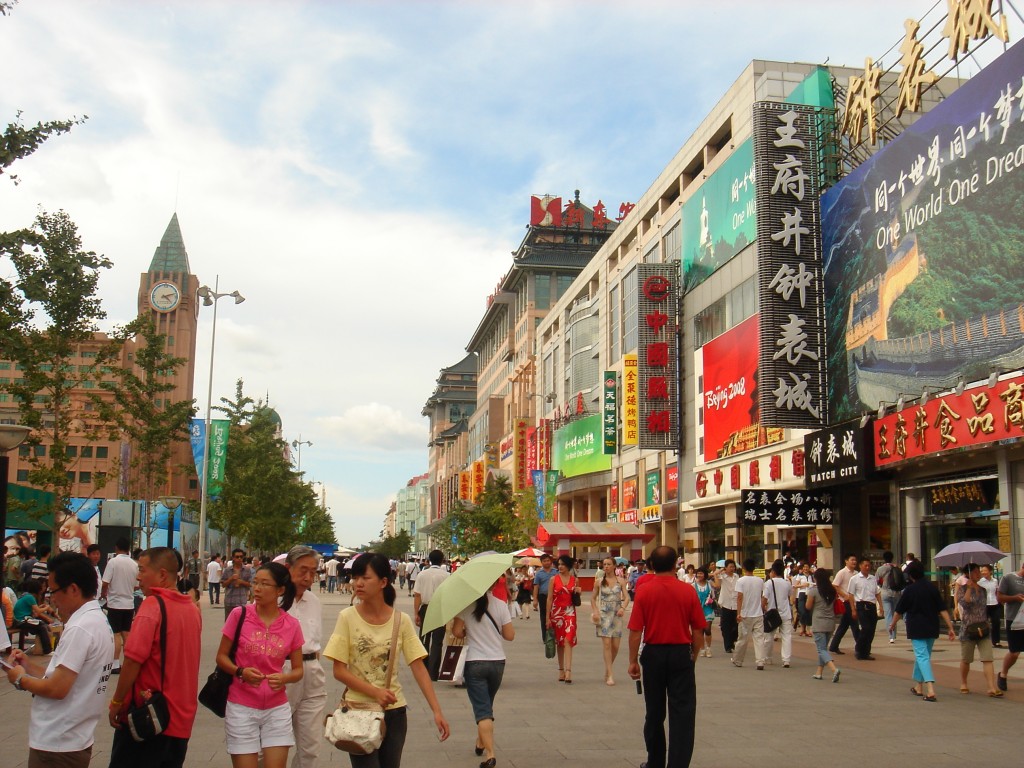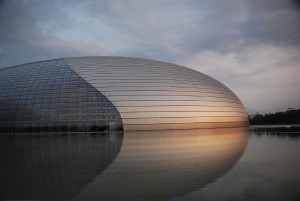
For every now, there is a then. China, of course, has many thens, but two are on my mind right now: the then of Mao’s Cultural Revolution, which might have outdone Stalin in its attempt to eradicate culture and replace it with ideology; and the then of the big melt, which began with Mao’s death in 1976 and gave birth to China’s rapid ascent to its current level of world power and influence.
Right now, the art of China seems everywhere. And it’s not just the ancient art of terra cotta soldiers and jade figurines. There’s a sense in the rest of the world that we have entered the Chinese Century, and if Beijing is the new Athens/Rome/London/New York, we’d better figure out what’s going on in the place.
 The Portland Art Museum, in a show assembled by London’s Victoria and Albert Museum, heralds the arrival of China Design Now. (“Now” is really then, but a recent then: The show was aimed to coincide with last year’s Beijing Olympics and to capture the wave of commercial and aesthetic design in the world’s most populous country, a wave that inevitably has since washed on.)
The Portland Art Museum, in a show assembled by London’s Victoria and Albert Museum, heralds the arrival of China Design Now. (“Now” is really then, but a recent then: The show was aimed to coincide with last year’s Beijing Olympics and to capture the wave of commercial and aesthetic design in the world’s most populous country, a wave that inevitably has since washed on.)
In New York, Carnegie Hall is hosting a Chinese cultural festival it calls Ancient Paths, Modern Voices. Chinese composers and musicians have become stars of the international scene, and several are part of the Carnegie’s extended party. Tan Dun conducts his Violin concerto The Love on Monday night at Alice Tully Hall, with soloist Cho-Liang Lin. On Nov. 4 at Carnegie, the St. Louis Symphony performs Bright Sheng‘s Colors of Crimson and Tan Dun’s Water Concerto. This weekend’s headliners are Shen Wei Dance Arts, who will be in Portland Nov. 11 as part of the White Bird season. New York’s 21-day festival concludes Nov. 10 with pianist Lang Lang and the Shanghai Symphony Orchestra.
This “now,” this flowering of Chinese cultural achievement, is an outgrowth of the restrictions of the Cultural Revolution and the intellectual relaxation of control that followed Mao’s death. A few months ago David Barboza recalled in the New York Times violinist Isaac Stern‘s 1979 visit to China, a celebrated journey that resulted in the documentary film From Mao to Mozart: Isaac Stern in China.
 I remember that film well — the extreme, almost ecstatic enthusiasm of China’s musicians; Stern’s encouragement and good will; his sense that the older students and musicians he encountered — the ones who’d spent years being “reeducated” in peasant labor and cut off from contact with Western music — seemed technically correct but lacking passion in their playing.
I remember that film well — the extreme, almost ecstatic enthusiasm of China’s musicians; Stern’s encouragement and good will; his sense that the older students and musicians he encountered — the ones who’d spent years being “reeducated” in peasant labor and cut off from contact with Western music — seemed technically correct but lacking passion in their playing.
Mao and his functionaries had virtually outlawed anything but traditional Chinese music, forcing musicians (and all sorts of other people) into what amounted to slave labor. Times were tough, and Barboza’s story in the Times quotes one older musician saying that the psychological brutalization during the Cultural Revolution was so harsh that 17 instructors at the Shanghai Conservatory of Music committed suicide.
So it was fascinating, at Friday night’s audience talkback following Third Angle New Music Ensemble‘s superb concert China Music Now at the art museum, to hear composer Ye Xiaogang‘s reply to a question about what effect the Cultural Revolution had had on him and other musicians who went through it. Continue reading China rising: Shen Wei, Tan Dun, Third Angle, Isaac Stern, and the smashing of the Cultural Revolution